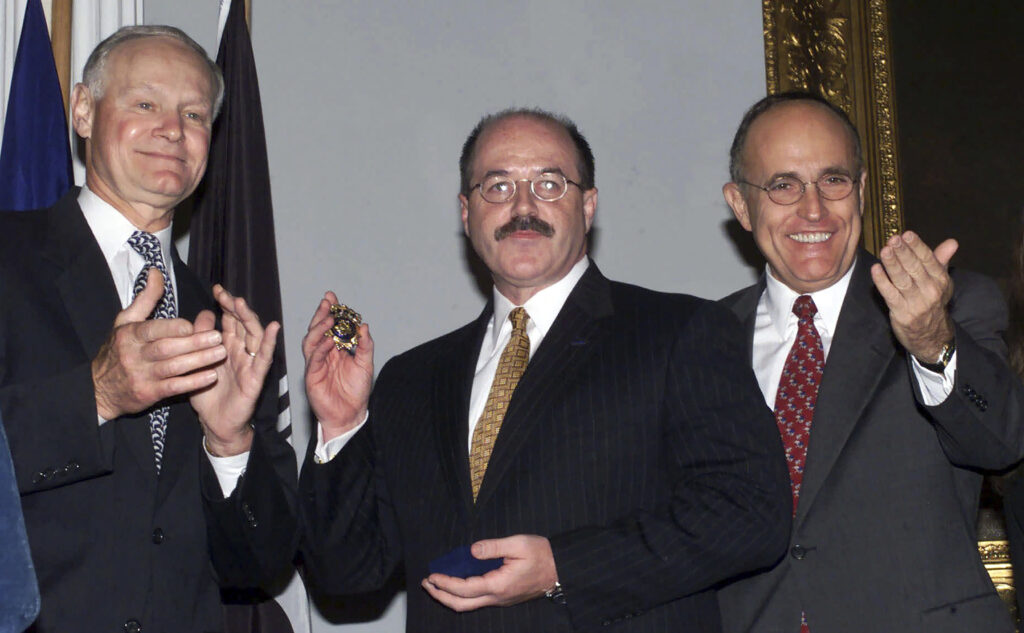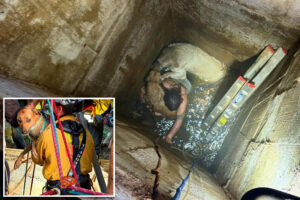In these last 130 days, President Trump has effectively ended the authorized illegal mass invasion of the country by thousands of destitute people every day, and he has moved to end the intolerable trade deficit of over $1 trillion and to promote foreign investment in the United States and repatriation of some industry while profoundly restructuring the approximately 20 percent of the nation’s GDP that is taken up by foreign trade.
Where there had been no serious discussion of peace in Ukraine in the nearly two years of that war, it is now being actively, if elusively, pursued. The president has repeated his former unequivocal position that a nuclear armed Iran would not be tolerated and that while he would prefer to negotiate the abandonment of that program he will not hesitate to eliminate it unilaterally if there is no alternative.
The omnibus bill that is inching its way delicately through the Congress will presumably be approved in close to its present form. It is astonishingly comprehensive. Among other measures it abolishes tax on overtime, tax on tips, tax on Social Security benefits, and tax on 401(k) income. It makes it tax advantageous to buy American-built cars and permits the entire cost of a new factory to be written off at once rather than over 39 years. There are literally hundreds of policy areas touched by this extraordinarily ambitious measure.
All of this is contemporaneous with an assault on racist provocations in the curriculum and tolerated ambience of American universities and on abusive woke authoritarianism dictating standards of diversity, equity, inclusion, obligatory environmentalism, and authoritarian leftist notions of social justice and corporate governance to the universities and the corporations of America.

There is overwhelming public approval for the administration’s comprehensive assault upon Critical Race Theory and transgender meddling and oppression in the Armed Forces and in women’s sports. Healthier food and lower drug prices are being aggressively pursued, and every cabinet or equivalent officer has been tasked to get rid of woke policymaking and unjustifiable expenses. This includes the Defense Department, which has also been tasked and endowed to assure that the United States will not be technologically outdistanced by any other country in hypersonic missiles and large warship defense and that President Reagan’s goal of a comprehensive anti-missile defense will be resumed.
Mr. Trump is indeed “filling the zone,” but there is room for another critical initiative: Profound criminal law and tort reform. It is a cherished myth of American life that the world envies the United States its justice system. In fact, all other societies that can rightly claim to be legally based and observant, regard the United States legal system with horror. The United States has 5 percent of the world’s population and 25 percent of its incarcerated people. It also has something close to 50 percent of its formally qualified lawyers.
The frequency of civil litigation and the percentage of the national GDP that it consumes is a scandalous waste of time and money in activities that in other civilized jurisdictions would be dismissed as “frivolous and vexatious litigation.” The immense political power of the legal profession prevents serious reform.
More worrisome and urgent is that in federal prosecutions 98 percent are successful, 95 percent without a trial, because of the manipulation of the plea bargain system. Potential witnesses are required to produce evidence supporting the prosecution under threat of being charged themselves with obstruction of justice but are assured that if they can jog their memories fruitfully for the benefit of the prosecution, they are guaranteed immunity from prosecution for perjury.
The corruption of this system is notorious, and there is not one prosecutor in the United States who does not concede that a good deal of it exists. It is an absolute mockery of the rights guaranteed in the Fourth, Fifth, Sixth, and Eighth Amendments against unlawful seizure and unreasonable bail, and promising a just grand jury and due process, prompt justice, and an impartial jury.

Mr. Trump has been subjected to greater illegal prosecutorial harassment than any prominent political figure in American history and is certainly very sensitive to the fragility and corruption of the American legal system. The lawyers love their 360° cartel disguised and swaddled in a lot of claptrap about a society of laws, and with even more nauseating hypocrisy, pompous piffle about “no one being above the law.” The United States has ten times the per capita amount of violent crime of Canada. This is to some extent unavoidable in a country of 330 million people, and 400 million firearms, where the right to bear arms is constitutionally guaranteed.
The only way to make any progress in this problem is to require the simple process of lasering identification onto ammunition and recording it at point of sale. I serve as an unpaid adviser for a firm, in which I have a potential financial interest, that has the most effective process to identify ammunition in this way. It will make greatly more efficient the warehousing and sequenced use of the large ammunition stores of the armed forces and metropolitan police departments, but it would also lead to the identification of many buyers of ammunition used in gun crimes and would at least increase the anemically low conviction rate on such crimes and would deter some of them. It would be progress.
Yet the president and the attorney general will have to define a path between anti-gun fanatics who insist on butting their heads against the constitutional wall of entitlement of citizens to keep and bear arms, and ideologues in the police departments who see efforts to curb gun crime as an unconstitutional assault on the police departments’ best friends in society.

Feature, say, the former New York City police commissioner, Bernard Kerik, whom I contacted during my work to promote laser ID markings on ammunition. Despite high initial interest, Kerik within a week did a 180 degree turn on identified ammunition after a few of his police chums said gun-owners must not endure the slightest inconvenience — a view that is just as hopeless an attitude as the ambition to confiscate peoples’ guns. Kerik’s answer to everything was more police — a good idea but not the only solution. Neither inflexible Palookas nor delusional gun-confiscators will reduce this profound problem.
There is a vast opportunity here for the president to emancipate the public from abusive lawsuits, turn the criminal justice system into a justice system and not just the conveyor belt to the bloated and corrupt prison system, reduce gun crime, and give America again a proud legal system.



